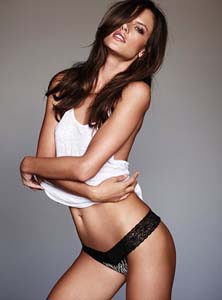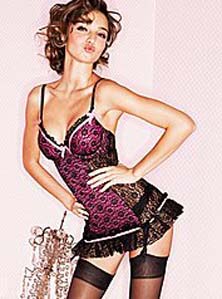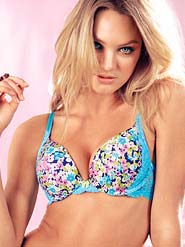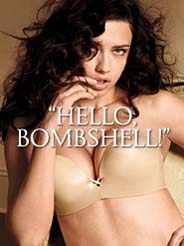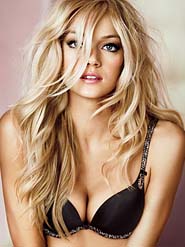| In the advertisement
on the right, the model serves the purpose of advertising a
particular type of bra. While it is the only piece of clothing that
is visible on her body, it is fair to say that her physicality is
also of paramount importance in this photo. With her hand
strategically placed next to her mouth and her breasts emphasized by
the arch of her back, it is possible for a viewer to interpret this
ad at its preferred meaning: that buying this bra will make you
sexier. Although this is a very plausible situation, the viewer may
also see the advertisement in a counter-hegemonic way; he or she may
first notice a potentially unattainable standard of beauty and
realize that the bra is not making the woman, but the woman is
making the bra. Therefore, a situation in which an oppositional
reading happens could, in fact, undermine the very encoding that
Victoria's Secret engrained in its advertisement. |
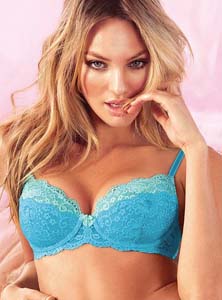 |
